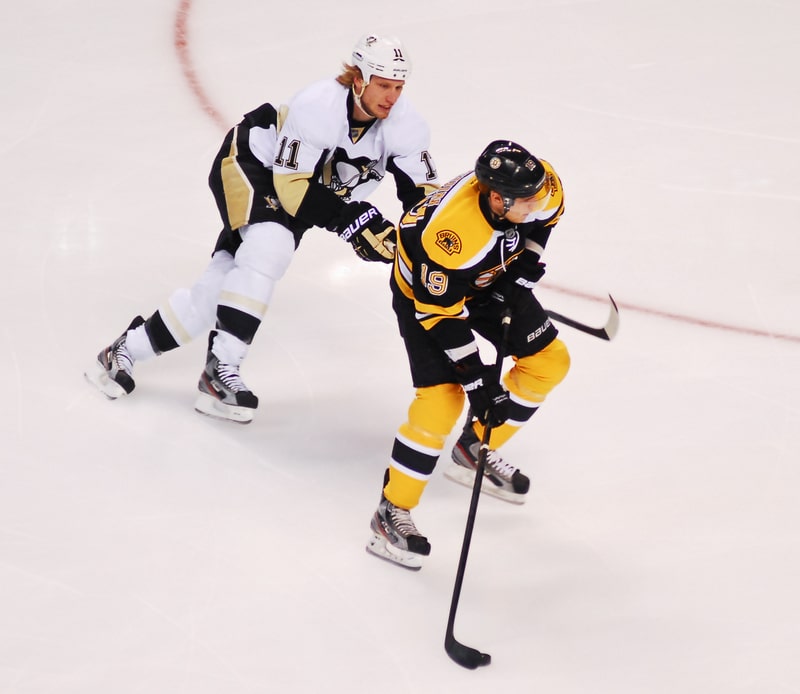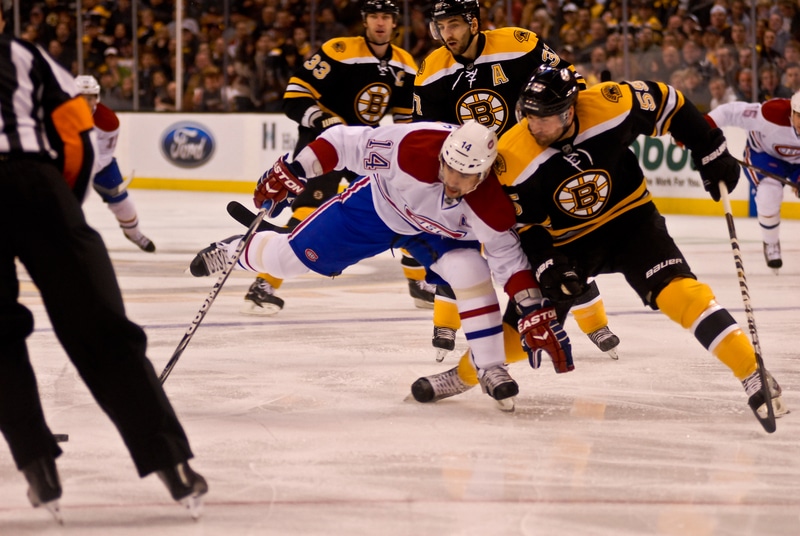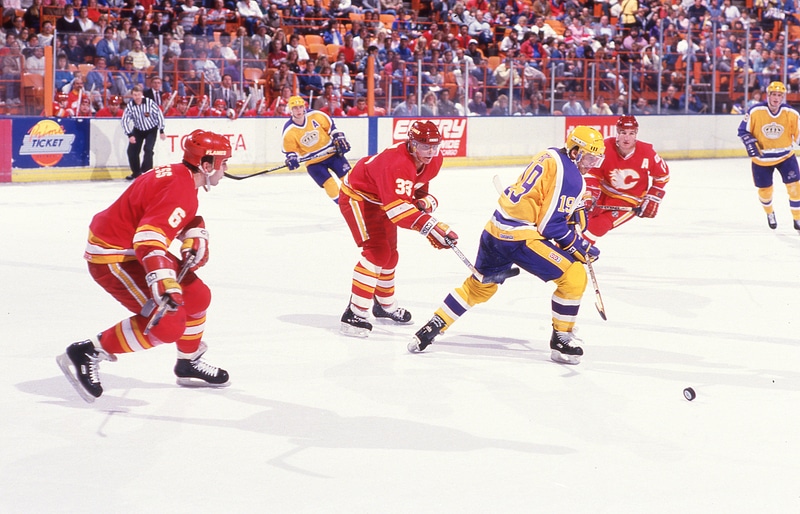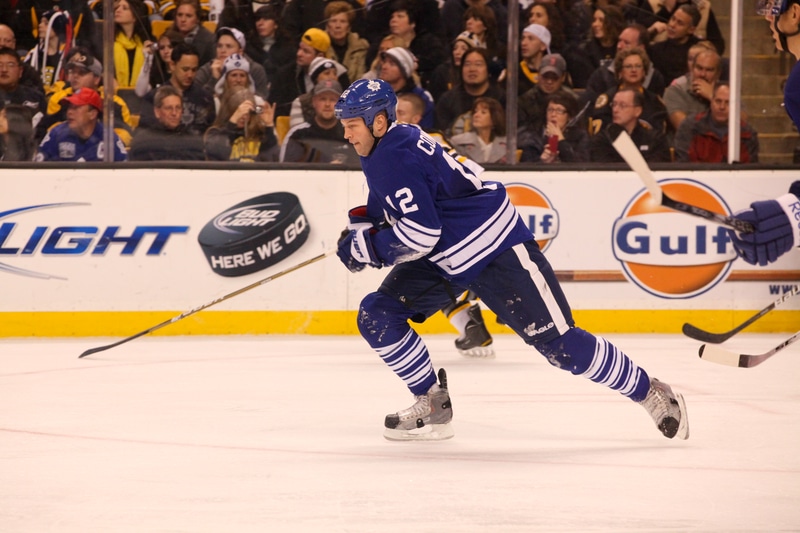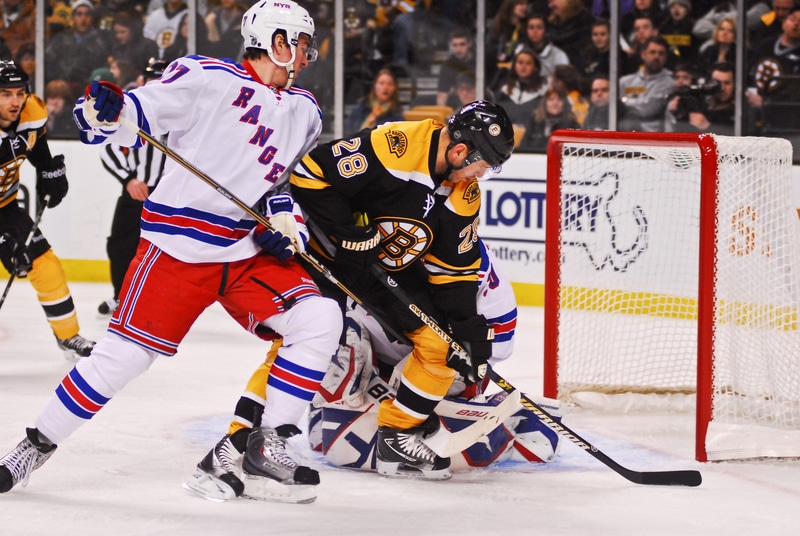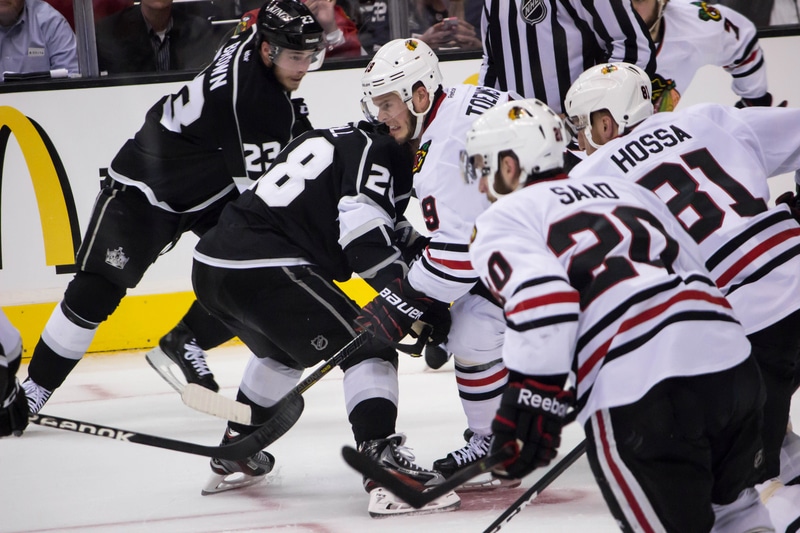Last updated on September 6th, 2023 at 03:56 pm
Forechecking in hockey is a defensive coverage scheme in the offensive zone. Hockey forechecking aims to generate turnovers and prevent the opposing team from scoring. Forechecking establishes physical play, forces the other team into mistakes, and limits offense opportunities for the opposing team.
So, what is a forecheck in hockey exactly? How do you forecheck in hockey, and when should you do that in a hockey game? When should you not forecheck in hockey? What are the differences between forechecking and backchecking in hockey? What is a 2-3 forecheck and a 4-check in hockey?
Here is the complete guide to what a forecheck is in hockey.
How Do you Forecheck in Hockey?
To start forechecking in hockey, you should get the puck deep into the offensive zone, usually by a dump-in play. A dump-in involves the puck carrier shooting the puck from the neutral zone toward the goal line of the opposition’s defensive zone. The puck carrier can’t be on their own side of the center ice line when they perform a dump-in, as it can result in an icing violation.
Following the dump-in, the opposing team’s defensemen will turn around and retreat to gain possession of the puck. Forechecking uses a team’s forwards to pressure the opposing team’s defenseman as they go back to play the puck in their defensive zone. The forwards’ job on a forecheck is to attack loose pucks, interfere with passing lanes, and body-check the opposing team’s defense.
What is Good Forechecking?
Good forechecking requires the forwards on the team to put pressure on the other team’s defensemen to force mistakes and limit transition opportunities. An effective forecheck puts the opposing defensemen under mental and physical pressure as they attempt to skate or pass the puck out of their defensive zone. When done correctly, an aggressive forecheck can generate scoring chances, limit transition chances for the opponent, and exhaust the other team both physically and mentally.
When Should You Forecheck in Hockey?
You should forecheck in hockey almost any time the puck carrier can get the puck past the offensive zone blue line and toward the opposing goalie and goal line during 5-on-5 play. During 5-on-5 play, forechecking can be a great way to interfere with the breakout of the opposing team. Forechecking can also be an essential tool for gaining control of the puck during a power play.
When Should You Not Forecheck in Hockey?
There are instances in which you should refrain from forechecking during ice hockey. One such example is in the event of a penalty against your team. If the other team has a man advantage, then an aggressive forecheck can be costly. If a team forechecks too aggressively during a penalty kill, it can result in easy opportunities for the other team to generate odd-man rushes.
Another instance in which teams should not forecheck or implement a conservative forecheck in the event of a line change. While dump-ins present a good opportunity for a forecheck, they also present an excellent opportunity to conduct a line change and substitute off tired skaters. Pressuring too aggressively during a line change can create odd-man rush opportunities for the opposing team.
What are Forechecking and Backchecking in Hockey?
Forechecking is a defensive strategy that occurs in the offensive zone. It involves the forwards interfering with passing lanes and applying pressure to the defensive team’s puck carrier. The goal of a forecheck is to limit breakouts, force mistakes, and generate scoring chances.
Backchecking is a defensive strategy that limits the opposing team’s transition offense and breaks up odd-man rush opportunities. It is extraordinarily tiring and effort-based, requiring forwards to skate hard back toward their defensive zone. Backchecking is used to apply pressure to the puck carrier and interfere with passing lanes as the opposing team moves through the neutral zone and into your defensive zone.
What is a 2-3 Forecheck in Hockey?
A 2-3 forecheck is an aggressive strategy to force the opposing team into mistakes in their defensive zone. The team applying a 2-3 forecheck will send two forwards deep into the offensive zone to apply pressure to the puck carrier. These forwards, usually a winger and a center, are responsible for pressuring the puck carrier from both sides and forcing a rushed pass attempt. The third forward on the team will remain higher and look to interfere with passing lanes along one of the boards.
During a 2-3 forecheck, the attacking team will position one of their defensemen near the other boards on the blue line to prevent the opposing team from easily breaking up the boards. The 2-3 forecheck strategy is to prevent the other team from passing from defenseman to defenseman and force the puck toward the middle of the ice.
What is a 4-check in Hockey?
The 4-check, or 1-4 forecheck, is a conservative forecheck designed to shut down the neutral zone. In a 4-check, only one forward is sent deep into the offensive zone. It is the forward’s job to try to apply pressure and cut passing lanes as best as possible. The other forwards on the team will drop back closer to the neutral zone and almost act as an extra pair of defensemen on the ice.
The goal of the 4-check is to limit transition offense and prevent odd-man rushes against your goaltender. This check is becoming increasingly popular in the NHL as hockey players and teams are looking to generate more transition offenses with their speed.
Conclusion: What is a Forecheck in Hockey?
In conclusion, forechecking is a defensive strategy used in the offensive zone. Forechecks usually follow a dump-in and rely upon a team’s forwards to pressure the opposing defense, cut off passing lanes, and force mistakes. A well-executed forecheck can both shut down the breakouts of the opposing team and generate scoring chances of offense. Teams should not aggressively forecheck when on a penalty kill or when conducting a line change.
While forechecking is a critical strategy in the offensive zone, backchecking is equally as important. Backchecking requires forwards to skate back hard on defense and apply pressure to opposing puck carriers. Backchecking is a major tool in helping to limit the transition offense of the other team.
While other strategies can be utilized, the 2-3 forecheck and 4-check are commonly used forechecking strategies. The 2-3 is an aggressive forecheck designed to shut down breakouts up the boards and force the puck toward the middle of the ice. The 4-check is a more conservative forecheck designed to shut down the neutral zone and limit transition opportunities of the opposing offense.
Similar Posts:
How Long is a Hockey Intermission?
What is a Power Play in Hockey?
Greg Kristan, owner of The Stadium Reviews, LLC and TM Blast, LLC, brings his extensive experience visiting over half of the MLB ballparks, along with numerous MLS, NHL, NBA, and NFL venues, to provide in-depth coverage on the bag policy, food options, and parking. He has also been interviewed about his experiences on several sports podcasts.

